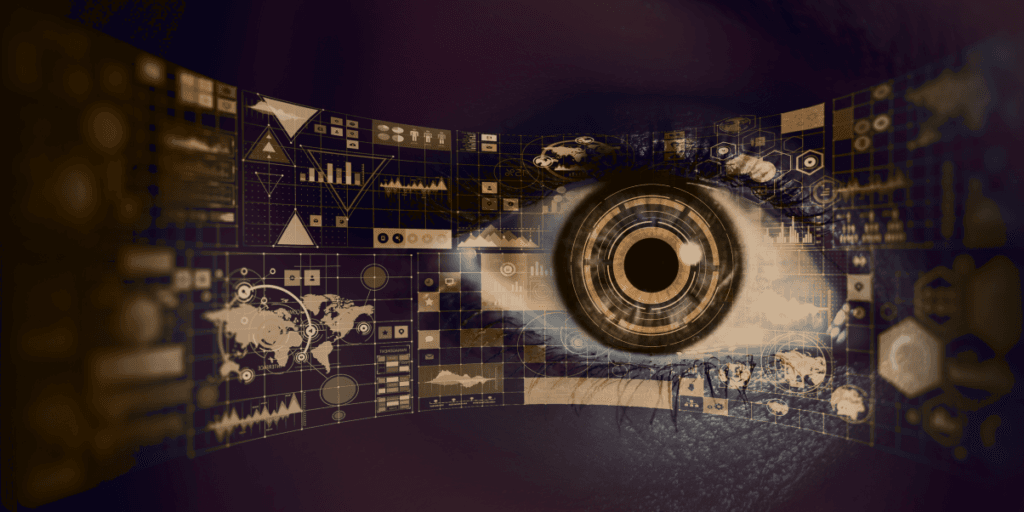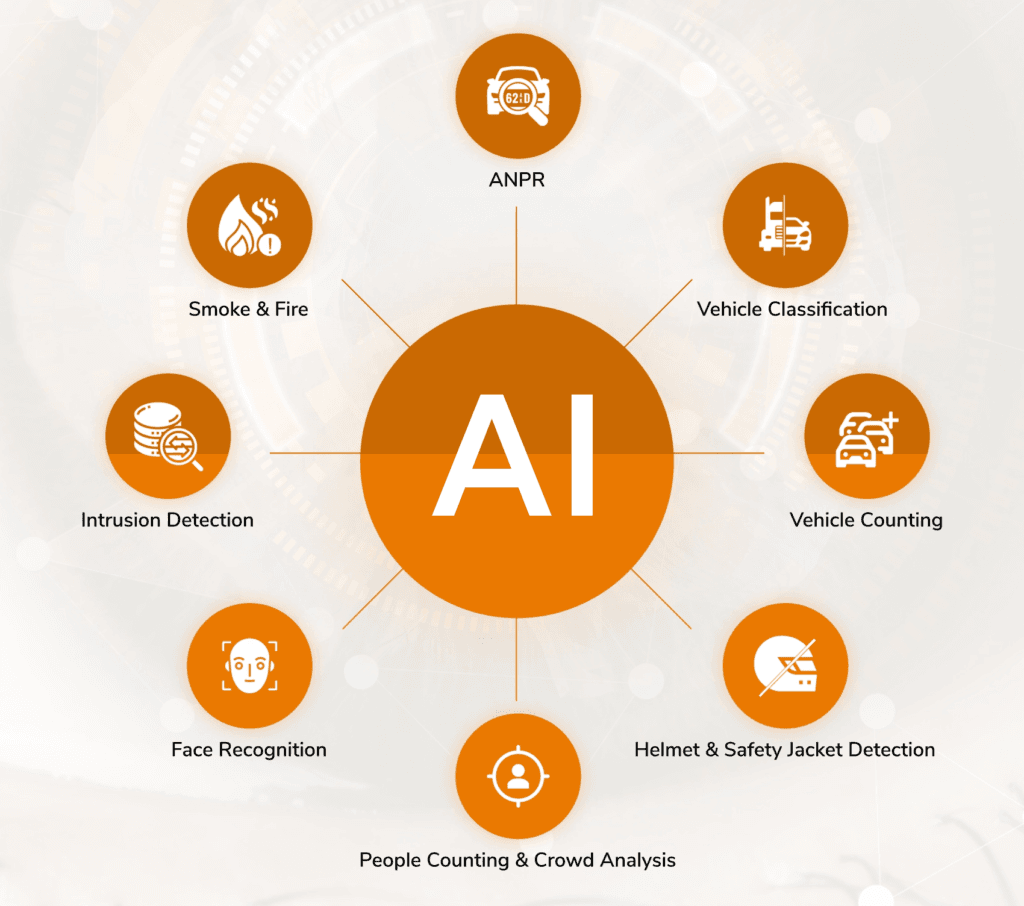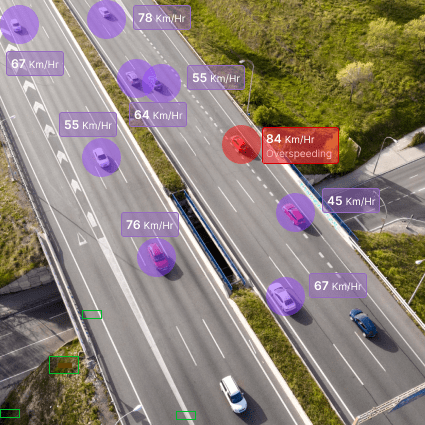

Introduction
We now live in a world where video analytics is useful and a game changer. It impacts industries like security, retail, transportation, healthcare, and entertainment. Thanks to artificial intelligence and machine learning algorithms, video analytics helps evaluate video data for better decision-making and productivity.
This guide will help you understand video analytics and how AI improves it. And the diverse applicability of video intelligence systems that many organizations can only do with today.
What is Video Analytics?
Video analytics is a set of technologies for analyzing video data content. It provides sensing information in videos using AI-based functional input analysis. The system analyzes the video streams and detects objects and events in real time or retrospectively.
It monitors their movements, recognizes or otherwise abnormal behaviour patterns, and automatically responds.
People have used conventional video surveillance systems in the past, but they have found human observation inefficient, error-prone, and not scalable. Video analytics software enables efficiency by performing tasks such as motion detection, object counting, and facial recognition, which are traditionally done manually but in less time.
Video Analytics AI: The Intelligence Behind The Role In Technology


From a different angle, employing AI in a video analytic process adds to the potential of traditional video surveillance systems. Video analytics AI enables the systems to identify objects and analyze their behaviours and activities, making them much more advanced and proactive.
For example, AI systems can analyze crowds and determine their behaviour to foresee and guard against dangers or even find risks in bags without owners.
AI-equipped video analytics systems can distinguish between an individual’s normal and abnormal behavior, reducing false alarms and enhancing overall analysis efficiency.
Other strategic integrations of AI technologies in video analytics systems include:
- Facial Recognition: Recognition of a person by their facial structure.
- Behavioral Analysis: Active surveillance to identify abnormal or dubious activity.
- Object Recognition: Ability to tell humans and animals apart from inanimate objects.
- License Plate Recognition: Identifying vehicles through their number plates.
Enhancing those features offers wise video analytic systems the potential to perform capabilities beyond mere movement detection. Enabling sectors such as protection, retail, and urban improvement to make knowledgeable selections based on video intelligence.
Categories of Video Analytics Software
Various video analytics software is available for various industries and use cases. Some of the most popular categories include:
- Real-time Video Analytics Software: This can analyze externally added video feeds within the instant interval and notify personnel about the threat as it occurs or any unanticipated activity as detected. Its common areas of applications include security systems, traffic monitoring, and emergency response.
- Post-event Video Analytics: In this category, the user examines a pre-explained definition of recorded/live video and provides useful information, such as the number of visitors to a shop or any unusual activity between certain times.
- Intelligent Video Analytics (IVA): This video analytics software performs more complex tasks and is therefore suitable for some form of advanced AI. For example, instead, it is possible to see effective moving patterns, such as loitering or abandoned items or even counting people on a feeding.
- Edge-based Video Analytics: Unlike other methods that send video data to a central server, this one processes the videos on the camera or any other local device. This is highly effective in places with low bandwidth or where data must be processed as received.
Applications of Video Analytics


Video analytics technology is universal, especially among players in this digital economy, and it is revolutionizing business operations. Below are some of the useful applications.
Security and Surveillance
This focuses more on using footage analytics for security and public prevention. Intelligent video surveillance systems equipped with AI. AI can assist in the real-time identification of potential security threats, supervise large areas with relatively fewer workforce efforts, and gather relevant evidence if need be.
- Intrusion Detection: Integrated systems security devices detect assurance breaches that are not permitted.
- Facial Recognition: Surveys crossing between. Recognizes faces in a watchlist of wants.
Crowd monitoring involves monitoring people’s normal activities and identifying distressing deviations from normal, such as an accident or a terrorist threat emerging from the crowd.
Retail and Customer Analytics
This technology is recommended, particularly in retailing businesses, where customer behaviour analysis enhances store layouts, promotional activities, and customer services.
- Footfall Analysis: It indicates people entering the premises, the total number of customers, and how long each customer stays and moves around the shop.
- Queue Management: The system detects when customers have overstayed in the queues without assistance and notify the staff manually or automatically to assign additional cashiers to help.
- Theft Prevention: Identifies and alerts management to the most unusual ways patrons interact with merchandise, which could indicate theft.
Traffic Management and Smart Cities
Smart cities are increasingly turning to video analytics for traffic control and the general safety of the public. Traffic cameras equipped with video analytic software monitor the condition of the roads, the number of vehicles, the presence of accidents, and forecast the traffic situation.
- Vehicle Counting: Tracks vehicular movement in real-time and highlights regions that cause visitors bottlenecks.
- License Plate Recognition: Provides law enforcement with data about the wrath of the driving force’s site visitor violation.
- Pedestrian Safety: This policy ensures pedestrian safety by deactivating site visitors’ indicators while people cross and activating them when they are on the road.
Healthcare
Hospitals and clinics mainly use video analytics to ensure patients’ safety, manage crowds, and improve operations. AI cameras can, in particular, help with fall prevention by watching over elderly patients or detecting any unusual movement that may indicate a fall.
- Patient Monitoring: Observe patients’ activities; an alert is sent out if any aberration is noticed.
- Crowd Management: This regulates the number of patients in the waiting area and aligns the number of nurses on duty to this figure.
- Intrusion Detection: Denies illegitimate access to restricted areas such as surgical rooms.
The Future of Video Analytics
As technology evolves, there appears to be no end to integrating video analytics into AI, machine learning, and big data. With intelligent video solutions across various sectors, this technology will develop further and become more predictive and efficient.
Key Trends for 2024:
- Deep Learning: Beginners can carry out extra correctly using deep getting-to-know models in video analytic structures. Which includes spotting and predicting complex traits in human behaviour and movements inside a given video.
- Cloud Integration: Cloud-enabled analytics will allow access from multiple devices without limitations and facilitate real-time collaboration.
- Edge Computing: With the advent of edge computing, faster video analytics will process action videos as the information is computed in the field rather than on central servers.
- Privacy-First Solutions: Given the increasing violation of individual privacy in such systems, future video analytic systems will more or less adhere to an extendable anonymity scheme and reach a level of encryption provision.
- AI-Powered Automation: Workers will be less noticeable and involved in activities such as alerting objects, operators, and operating devices for information collection and interpretation.
Conclusion
From protection and retail to visitor management and healthcare, video analytics programs are diverse and some distance-achieving. As technology evolves, it will play a key role in developing smarter, safer, and greener environments.
By investing in the right video analytics software program, companies can unlock statistics-driven insights that enhance decision-making, reduce costs, and enhance purchaser reviews.
2024 marks a major milestone as intelligent video analytics becomes mainstream, shaping the future of how we interpret and act on video data.












